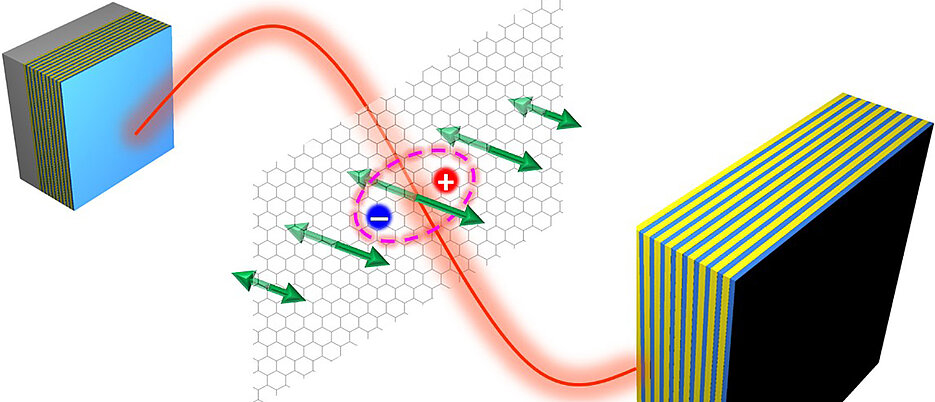Revealing New States in 2D Materials
02/24/2022Würzburg researchers have highlighted and quantified a three-fold coupling between exciton, photon, and phonon in a microcavity with embedded two-dimensional materials.

Atomically thin two-dimensional (2D) materials can provide highly interesting excitonic properties, which render them an attractive platform to explore polaritonic physics.
In the literature, a variety of inorganic exciton-polariton systems have been studied experimentally and described theoretically using the broadly accepted model of two coupled oscillators, where only the coupling between excitons and cavity photons is considered.
Now, Donghai Li and a group of researchers from Julius-Maximilians-Universität (JMU) Würzburg in Bavaria, Germany, have found that placing 2D semiconductors in microcavities can lead to a strong interaction between not just excitons and cavity photons but also with phonons. The team believes that their results could shift the paradigm of exciton-polariton physics in 2D materials by highlighting and quantifying the role of phonons therein.
Novel method with temporal resolution of 20 femtoseconds
The team developed a novel method of coherent 2D micro-spectroscopy, which provides spectral resolution for both the excitation and detection steps in combination with microscopic spatial resolution and 20 femtosecond temporal resolution.
With this technique, a rich multipeak spectrum of excitations, which thus far remained inaccessible to linear photoluminescence experiments, is mapped. Comparison with a novel vibronic polariton model, which takes into account not only the degree of freedom of excitons and photons, but also that of phonons reveals multiple polariton branches induced by exciton-photon-phonon hybridization.
This marks the discovery of previously unobserved bright states in microcavities with embedded 2D materials. The JMU researchers expect that the discovery will be of importance for the ongoing attempts of realizing room-temperature Bose-Einstein condensation and polariton lasing in these systems.
Publication
D. Li et al., "Hybridized exciton-photon-phonon states in a transition-metal-dichalcogenide van-der-Waals heterostructure microcavity", Physical Review Letters 128, 087401, 23.02.2022, https://doi.org/10.1103/PhysRevLett.128.087401
Contact person
Prof. Dr. Tobias Brixner, Chair of Physical Chemistry I, University of Würzburg, T +49 931 31-86330, brixner@uni-wuerzburg.de






